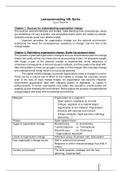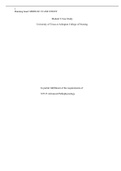Samenvatting
Samenvatting boek Burke Verandermanagement
Het boek van Burke (2017) is volledig samengevat met een nadruk op de hoofdstukken die in het vak Verandermanagement () behandeld zijn. De samenvatting is in het Engels. Deze overzichtelijke en uitgebreide samenvatting behandeld de hoofdstukken 1 tot en met 10 uitgebreid, en licht de hoofdstukken 1...
[Meer zien]














